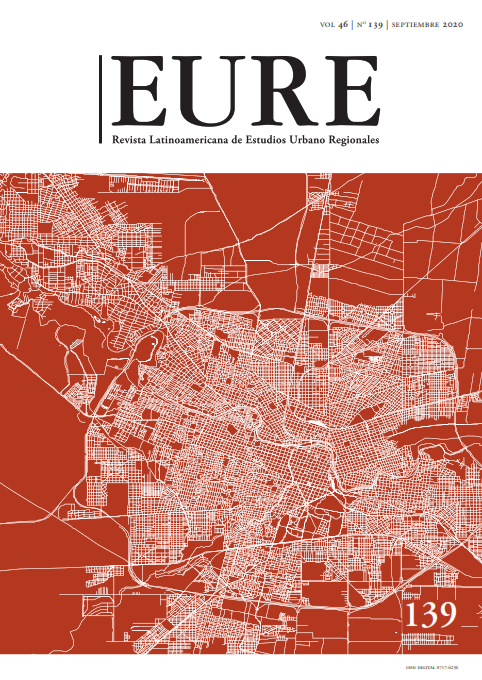Impact fees and residential densification in the Metropolitan Area of Santiago, Chile: critical analysis of the new law that establishes a system of contributions to public space
DOI:
https://doi.org/10.4067/S0250-71612020000300047Keywords:
public space, urban planning, urban renewalAbstract
This article presents and analyzes the potential contribution of the new Law of Contributions to Public Space, to the financing and implementation of public spaces. This article simulates the contribution of private intensive residential densification operations in 15 neighborhoods of the Metropolitan Area of Santiago. The Law constitutes a framework for moving towards balanced urban development through payments for impacts proportional to density. However, the results show that the contribution percentage is insufficient to implement the communal and inter-communal investment plans. In turn, their final contribution in land or money transfer responds to location or lot characteristics because tax assessment and the lot area have greater impact than the density of the residential building, on the contribution to public space. It is shown that when calculating the contributions with the occupation density, distortions occur with respect to the density planned by local zoning instruments.
Downloads
Published
How to Cite
Issue
Section
License
Copyright (c) 2020 Revista EURE - Revista de Estudios Urbano Regionales

This work is licensed under a Creative Commons Attribution 4.0 International License.
Al momento de aceptar la publicación de sus artículos, los autores deberán formalizar la cesión de derechos de autor a EURE, según las condiciones establecidas por la Revista.
Ésta establece que el autor autoriza a EURE de manera gratuita, exclusiva e ilimitada a reproducir, editar, publicar, distribuir, publicitar, comercializar y traducir el artículo, a cualquier soporte conocido o por conocer y desarrollar.
Del mismo modo, los autores aseguran que el artículo propuesto es original, no publicado y no propuesto para tal fin a otro medio de difusión.


